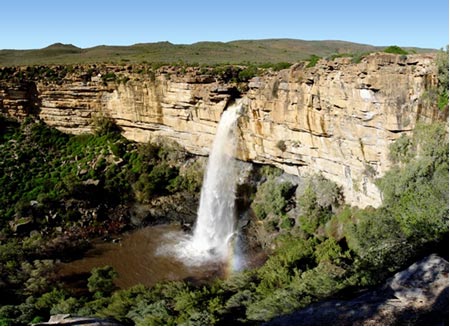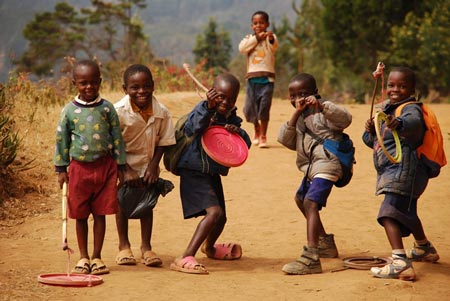People and Parks: Lessons
Access and benefit sharing
- The cornerstone of understanding and reaching consensus on access and benefit sharing is appears to be the implementation of the CBNRM guidelines. Both CapeNature and iSimangaliso Greater Wetland Park attribute the success of their access and benefit sharing models to enabling communities to understand natural resource management.
- It is apparent that a clear understanding of direct and indirect benefits must be ensured among all involved parties.
- It is essential to understand exactly what benefits a park can offer and to ensure that false expectations are not created. Again, it became clear that when communities were given a firm foundation in understanding conservation and resource management, this understanding provided a more stable foundation for negotiating issues of access and benefit sharing.
- Conservation authorities need to invest in research in order to understand patterns of sustainable harvesting. This would inform the conditions within permits and licenses given to resource users – e.g. quantities, seasons, and at which stage of the plants’ development harvesting and collection may be allowed.
- In many parks, stakeholders were able to identify indirect benefits from the park which led to a reduction of pressure on natural resources. These include laundry services, tour guiding, composting, hospitality services, employment opportunities.
- The Community Levy system implemented by Ezemvelo KZN Wildlife has proven to be tremendously beneficial to the communities. It has resulted in direct benefit to the community through tourist gate takings. It is this type of pioneering thinking that could lead to real solutions to simplifying the complex perception of benefits.
- Communities must be assisted with establishing their own medicinal and food gardens, as in the case of Witfontein Medicinal Plant Gardens in George and the Simunye Farmers Association in iSimangaliso.
Co-management
- One of the most critical principles of reaching a mutual arrangement with stakeholders is to communicate and to maintain transparency. The foundation of co-management is TRUST.
- Robust institutional structures that are fully representative must be created. Communities need to also be aware of the fact that if their institutional structures are not solid, then there will always be the risk of uncertainty amongst all stakeholders.
- Communicate, Capacitate and Co-operate are three key principles.
- It is absolutely critical that all stakeholders understand the co-management framework. This should be workshopped in detail with full respect of language use and clear explanation of terminology. In the Richtersveld, the CPA engaged legal services to assist them to interpret legal documents and to therefore make these documents more accessible.
- Feasibility Studies must be carried out – different options and various business models must be looked at and these models should be presented to the communities. Communities must be helped and empowered to make the decisions that will benefit them the best in the long term. Ezemvelo KZN Wildlife contracted service providers to investigate, research and formulate various working models. These were then presented to the Land Claimants for review and discussion. At the landmark meeting held at the Ithala Game Reserve on 1 March 2010, communities were presented with various models which they reviewed and discussed.
- The MTPA has identified that planning, collaboration, communication and adaptability are crucial to the success of co-management agreements.
- The MTPA also advocate the need to bring landowners together under a trust.
Post settlement support
- The most critical aspect is to manage expectations.
- It is essential for the park authorities to create an enabling environment which encourages honest and open discussion around issues of post settlement. This should be done through allocating the necessary funding towards the process; including meetings, communication, awareness, and transparency.
- It is critical that there is financial planning for the People and Parks Programme at the local level.
- The communities must be informed and must be empowered to understand all sides of the story. They need to be made fully aware of the opportunities, challenges and limitations.
- The relevant authorities, government departments and institutional structures must engage through open and honest dialogue in order to reach agreements and to formulate a support strategy.
- One of the key lessons that came out of the Manyeleti Case Study was the importance of clarifying responsibilities, rights and power within the relationship.
- The MTPA also advised the joint revision of an Integrated Management Plan. This is to be followed by testing the plan, and then revising it accordingly.
Social and economic benefits
- When it comes to social and economic benefits the key word is partnership. The most essential feature of the CPPP venture is that there is a healthy partnership between stakeholders.
- Funding and resources remain a stumbling block in cases where the community trust that is engaged in the partnership might not be informed and empowered enough in business principles. It is essential that all players be empowered in order for the partners to be on an equal footing.
- The communities and chiefs should be consulted at the earliest stages of product development. This ensures that concerns and ideas are incorporated from the beginning and contributes to a shared sense of ownership.
- In the case of the Mehloding project, it became apparent that there needed to be a stronger marketing strategy and diversification of products to ensure financial rewards at all phases of the project.
- In Madikwe, it was evident that the short term rewards could easily lead to the community arm of the partnership feeling discouraged and demotivated due to the lack of immediate benefits. The business model used should consider short, medium and long term benefits. These benefits should be clarified to the community stakeholders.
- In the case where communities have taken loans in order to invest in the partnership, it is critical that they understand the risks associated with loans and also how this will eventually affect the returns on their investment.
- As with the Mehloding project, the Madikwe Game Reserve also acknowledged the need for identifying other development opportunities and creating other SMMEs besides the central project for which the partnership was developed.
- In most of the case studies evaluated, the value of the People and Parks Programme could be measured by how much the programme had affected the livelihoods of communities.
- It is those cases where parks involved local people in tourism, infrastructure development, EPWP programmes, income-generating opportunities and created opportunities for employment, that the best practices can be found and the best lessons can be learnt.
Capacity building
- The MTPA highly recommends the development of a Participatory Mapping Paper which educates community members on writing proposals for funding.
- Youth empowerment should happen through various skills building workshops and environmental education initiatives.
- SANParks has developed many streams of environmental education, most especially through the Kids in Parks programme and its Conservation Calendar Days. Here the youth are encouraged to participate in fun activities where they interact with nature and learn about the environment.
- SANParks has also developed strong linkages with other programmes such as Working for Water, Working for Wetlands, Working for the Coast and Working for Fire. These EPWP driven programmes have a strong element of capacity building. The beneficiaries of these projects have benefited from tremendous skills upliftment and training interventions. Both the Tsitsikamma and the Cape Aghulas National Parks have strong t capacity building programmes as a result of these linkages.
- The Usuthu Gorge Biodiversity Stewardship Programme also emphasises the power of learning. The environmental education programmes made such an impact on these communities that they showed commitment to the project to protect the land and its biodiversity.
Good governance
- The ultimate truth is that the People and Parks Programme cannot and will not work without sound institutional structures.
- Good governance is required from the communities themselves as well as the park authorities. This is the cornerstone of the programme.
- The need for champions cannot be overemphasised – in any good team, good leaders need to be identified to keep the team strong and focused on its goals. The case studies which showed the most positive results were those that had champions within the park and champions representing the communities too.
- The Nselweni Bush Camp in Hluhluwe is one of the most sophisticated examples of good governance in the People and Parks Programme. The Amakhosi, who own and manage the project, admitted that they had to learn to “operate above politics” in order to progress. This is one of the most powerful lessons learnt through the People and Parks programme
Conclusion
The People and Parks Programme has played a pivotal role in nation building in South Africa. It has managed to create linkages in the face of divide and has built peace where there once was conflict and disagreement. At the very heart of this programme are the issues of land claims as well as access to natural resources. The fact that communities and park authorities are still able to sit around a table and talk about the future, is testament that the programme has played (and continues to play) an integral part in unifying people, despite the politics of the past.
There are challenges and many incredible hurdles to cross, but the PAA has created an enabling environment for these to be resolved. The various PA Agencies and the noble communities that have weathered the storm over the past years now leave a proud legacy of best practices and lessons for the empowerment of future generations.




